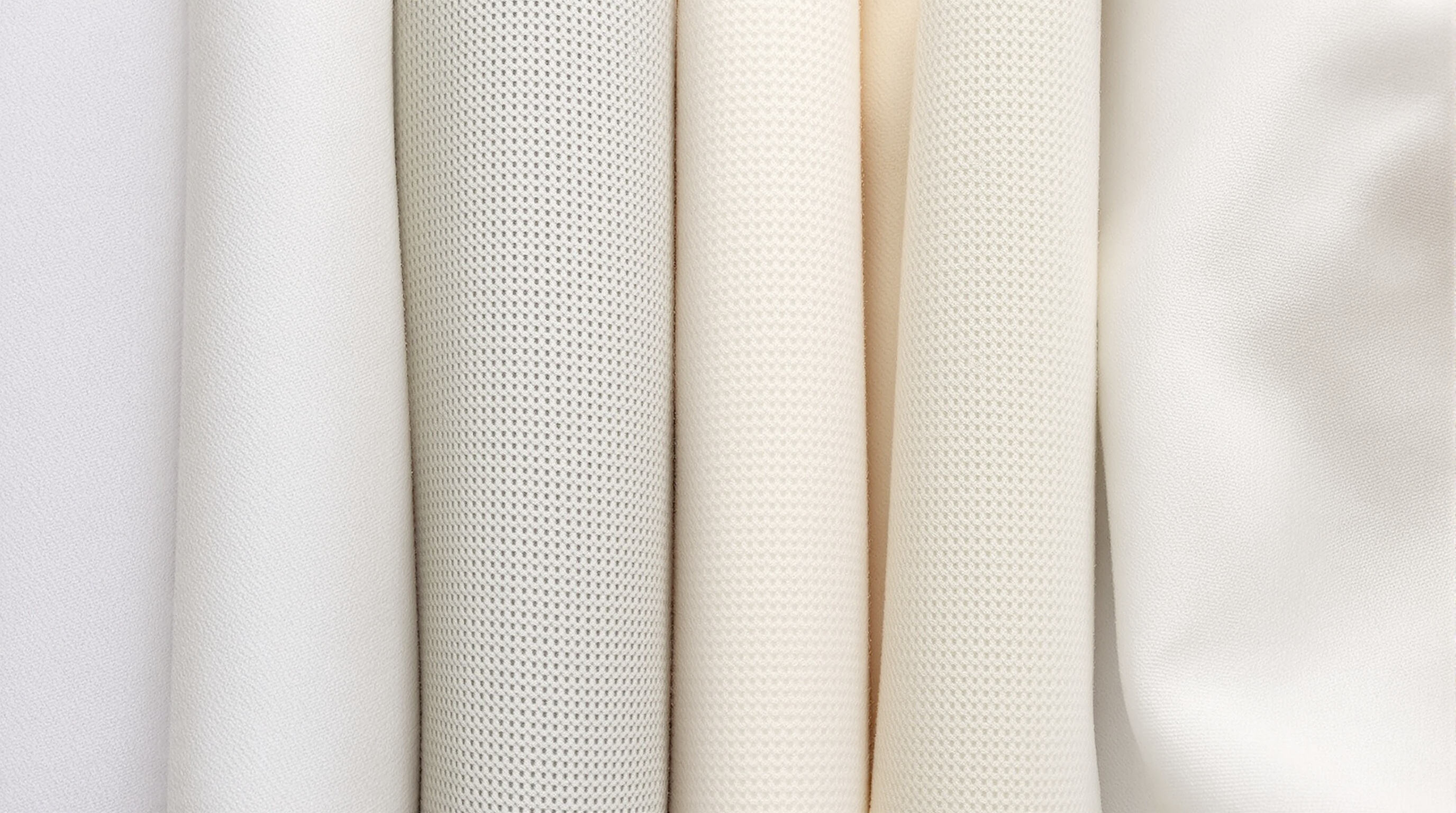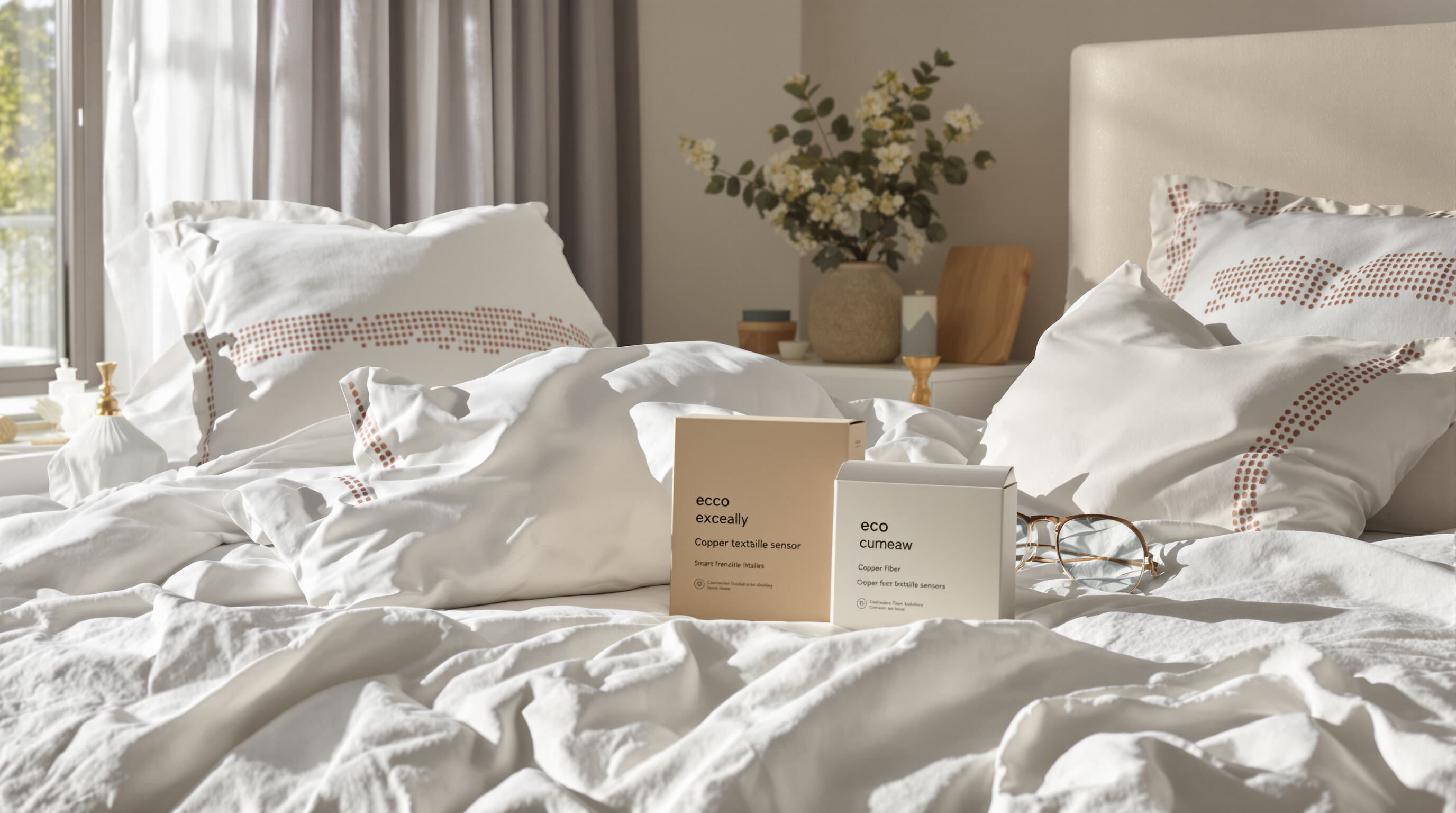
Hypoallergenic fabrics help cut down on contact with those pesky irritants we all know about dust mites, pet hair stuff, and mold that gets everywhere. The really tight weave fabrics, around 300 threads per inch or so, basically stop tiny allergens from getting through into our skin. Some materials also have special treatments that stop bacteria from growing on them, which adds another layer of defense against allergies. Take sateen woven organic cotton for example it stops about 94% of those annoying dust mite bits compared to regular cotton according to some research published in the Global Asthma Report last year. Makes sense why people with sensitive systems are turning to these kinds of materials more often.
Natural fibers such as organic cotton, bamboo lyocell, and TENCEL™ are ideal for sensitive skin due to their breathability and lack of synthetic additives. Bamboo's natural compound, bamboo kun, reduces bacterial buildup by 70% over 48 hours. These fibers also wick moisture effectively, minimizing damp conditions that promote allergen growth.
A fabric's hypoallergenic performance hinges on three key factors:
Together, these properties ensure long-lasting, safe performance in premium bedding sets designed for allergy sufferers.
Organic cotton feels much better against sensitive skin because it lets air circulate so well, which is why many people who care about quality bedding reach for it first. Since no synthetic chemicals were used during growing, the fabric has these tiny holes throughout that actually help keep things cool and dry. Moisture builds up less, and that means fewer dust mites hanging around. Dust mites cause problems for a lot of allergy sufferers too, maybe as many as half according to some research from the Allergy Foundation back in 2023. So avoiding them through natural materials makes sense for anyone concerned about their health. Plus, organic cotton adjusts to body temperature pretty well, giving good all night comfort without needing any special chemical finishes added later on.
Bamboo viscose has something called bamboo kun, which is basically nature's own defense mechanism against bacteria. According to research published in the Textile Research Journal back in 2022, this substance can stop bacterial growth at around 99.8% within just 24 hours. What makes this material so special is that it naturally resists allergens building up without needing any extra chemical treatments. The fabric itself has these really tight fibers that block out tiny particles from the air. Plus, tests show it pulls away moisture about 40% quicker than regular cotton when we look at how well it regulates temperature. This means the material stays drier overall, creating conditions where allergens simply don't want to stick around.
TENCEL™ Lyocell can soak up about half again as much moisture compared to regular cotton fabric before letting go of that moisture back into the atmosphere. This property helps cut down on problems like mold growth and those pesky dust mites finding a home in our beds. What makes this possible is how it's made - the manufacturing process actually captures around 95% of all the solvents used, so there's hardly any chemicals left behind after production. The material itself has a really smooth texture which means less rubbing against sensitive skin areas. Plus, at a microscopic level, the fibers create sort of a shield effect blocking out tiny particles measuring down to 0.3 microns in size, which happens to be smaller than most common pollen types we encounter daily. All these features together explain why many people consider TENCEL™ bedding options among the best choices available when looking for something both gentle on allergies and environmentally friendly too.
Silk's tightly woven protein fibers naturally resist dust mites and bacterial growth. The ultra-smooth surface minimizes skin friction and offers excellent moisture-wicking capabilities, maintaining a dry sleep environment. Unlike moisture-retaining fabrics, silk supports thermoregulation without chemical treatments, making it a luxurious yet functional option for allergy-prone individuals.
Hemp and linen offer durable, eco-conscious solutions for sensitive skin:
These renewable materials are ideal for chemical-sensitive individuals. Linen provides year-round temperature stability, while hemp excels in bacterial resistance, offering long-term relief in non-toxic bedding.
When shopping for truly hypoallergenic and organic materials, checking for proper certifications makes all the difference. The Global Organic Textile Standard (GOTS) checks both the organic fiber content and looks at how ethically things are made. Then there's OEKO-TEX Standard 100 which tests for more than 350 potentially harmful chemicals, from formaldehyde right down to heavy metals. For those looking at latex items specifically, the Global Organic Latex Standard (GOLS) gives peace of mind regarding chemical safety. These independent certifications actually matter more than just seeing the word 'hypoallergenic' printed somewhere. According to recent research from the Textile Standards Council in 2023, products with these certifications tend to cause about 78% fewer skin reactions among people with sensitivities. Before making a purchase, take a moment to cross reference those certification numbers on their official websites to be sure everything checks out.
Chemical treatments during manufacturing can undermine even the purest fibers. Azo dyes may release carcinogenic amines, and formaldehyde-based finishes can trigger respiratory issues. Choose materials with safer alternatives:
| Treatment Type | Allergy-Safe Alternative | Reduction in Reactions |
|---|---|---|
| Dyes | Plant-based/azo-free | 62% less irritation |
| Softeners | Silicone-free | 45% fewer rashes |
| Antimicrobials | Zinc-based natural | 39% lower sensitivity |
Manufacturers using closed-loop water systems reduce chemical residues by up to 90% compared to conventional methods (Eco-Textile Review 2023). Prioritize OEKO-TEX STEP-certified facilities for transparent, hygienic production.

Next-generation hypoallergenic bedding integrates smart textiles with embedded biosensors that detect allergens like dust mites or pollen, alerting users via smartphone apps when levels rise (Textile Institute 2023). Paired with copper-infused weaves that reduce bacterial growth by 99%, these fabrics create adaptive sleep environments tailored to individual sensitivities.
Sustainability is shaping innovation in hypoallergenic textiles. TENCEL™ Lyocell leads with a closed-loop production process that recycles 99% of solvents and uses 40% less water than conventional cotton (Sustainable Textile Report 2024). Biodegradable options like hemp-linen blends break down naturally within 12 months and resist mold and mildew—key benefits for allergy-prone homes.
The market for organic cotton bedding has been climbing steadily at around 8% per year since early 2021, mainly because shoppers want their beds to have those OEKO-TEX® labels according to Grand View Research's latest numbers from 2024. TENCEL™ fibers make up nearly a quarter of all high-end bedding purchases today, prized both for being gentle on sensitive skin and for coming from renewable sources. Many companies now mix TENCEL™ with fabrics dyed using Global Organic Textile Standard methods, which helps get rid of leftover chemicals that might irritate people's skin during sleep.
A hypoallergenic fabric is designed to reduce or eliminate common allergens, such as dust mites and mold, by using tight weaves or natural treatments that prevent allergens from penetrating or accumulating.
Yes, natural fibers like organic cotton, bamboo lyocell, and TENCEL™ are often preferred for sensitive skin due to their breathability and lack of synthetic additives, minimizing potential irritants.
Certifications such as OEKO-TEX® ensure that materials are free from harmful chemicals, providing additional trust in the product's safety for sensitive skin and overall health.
 Hot News
Hot News2025-09-04
2025-09-02
2025-09-01
2025-07-08
2025-06-10
2025-11-27